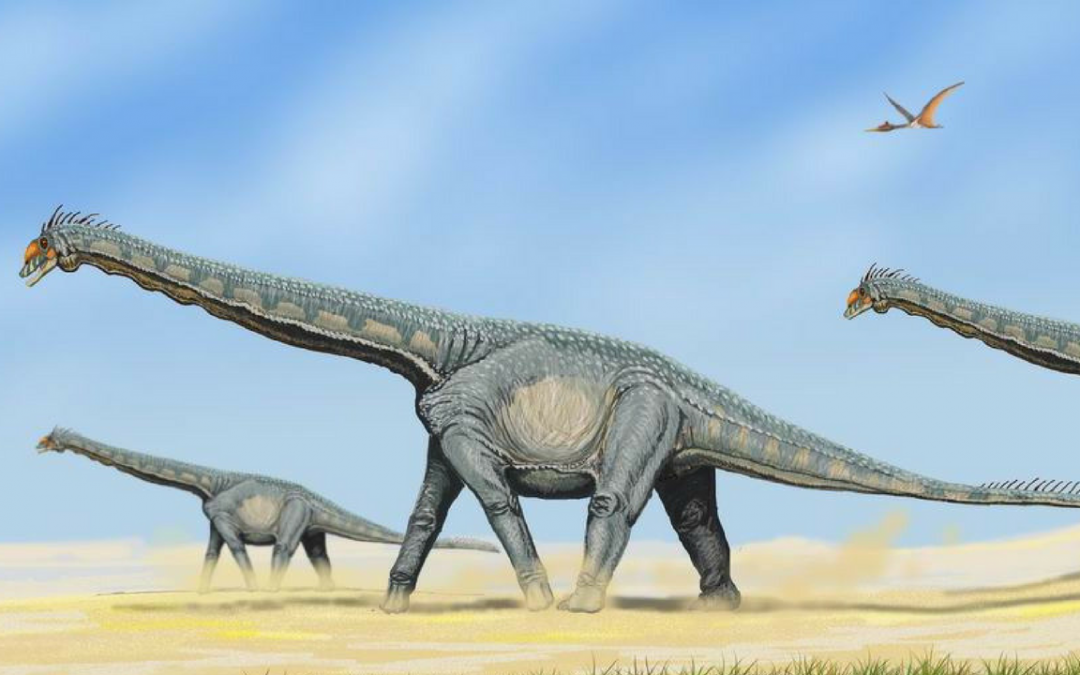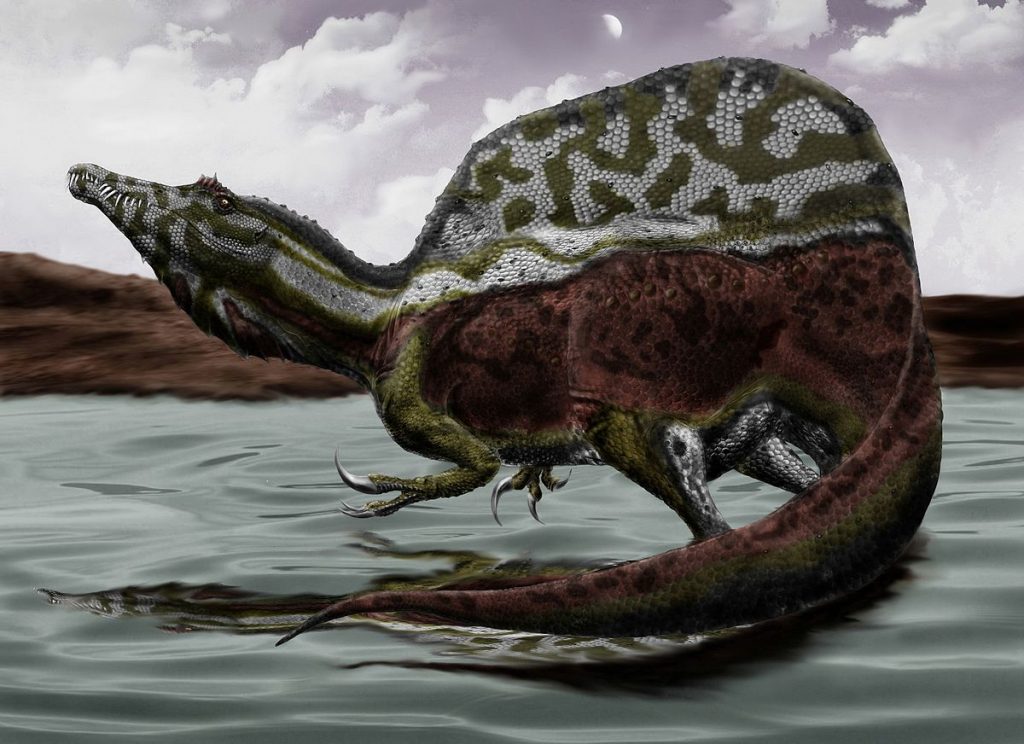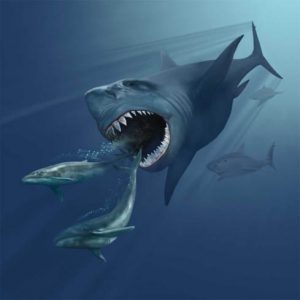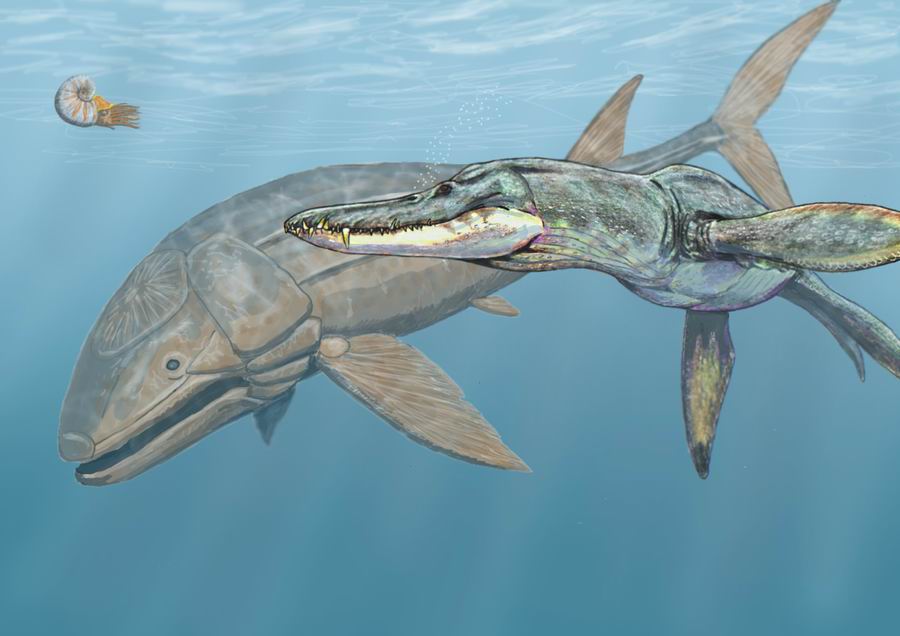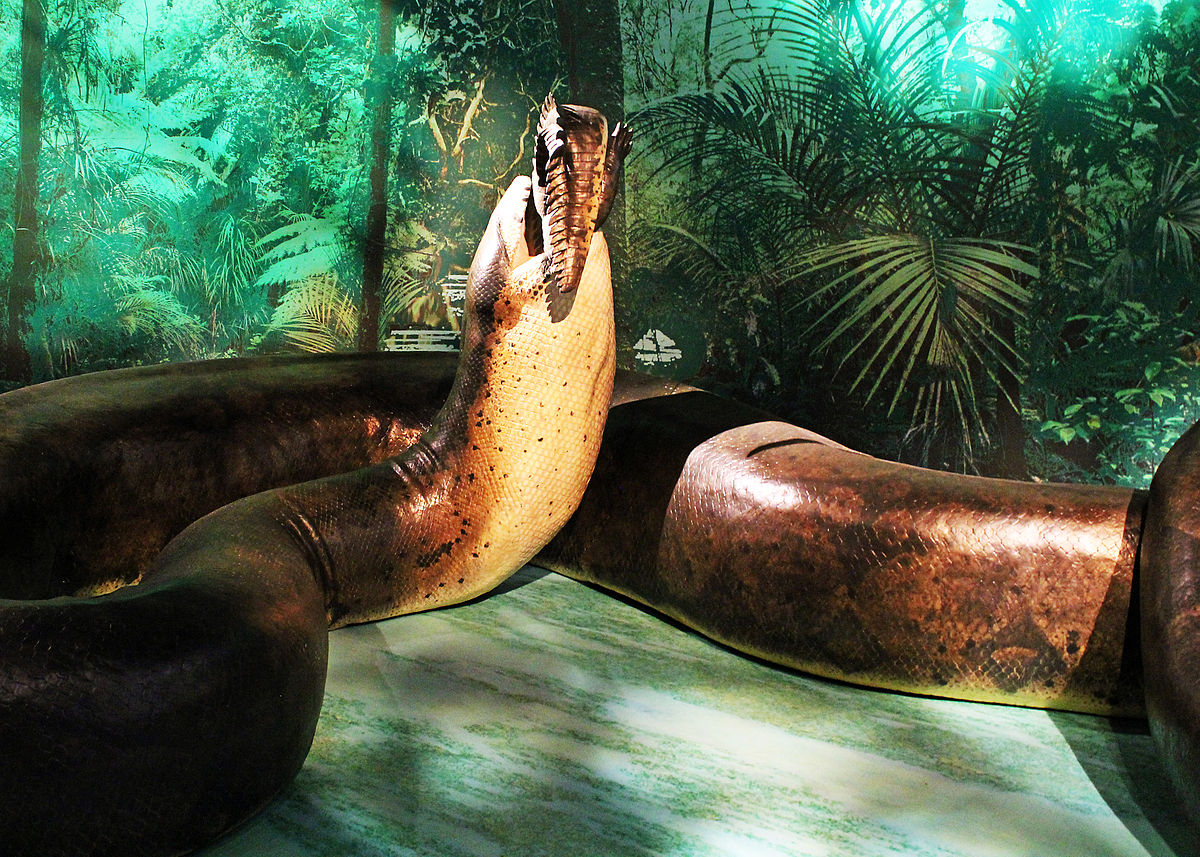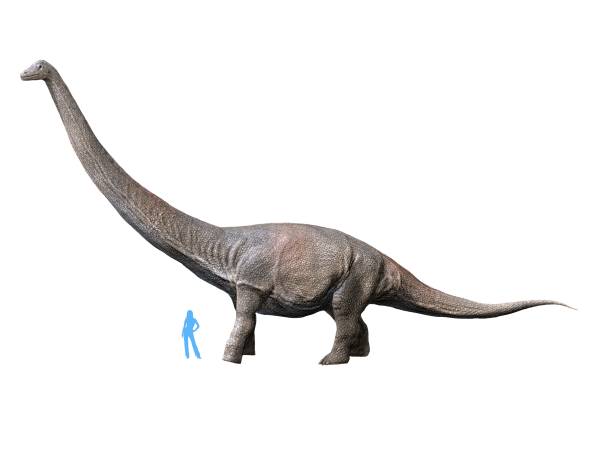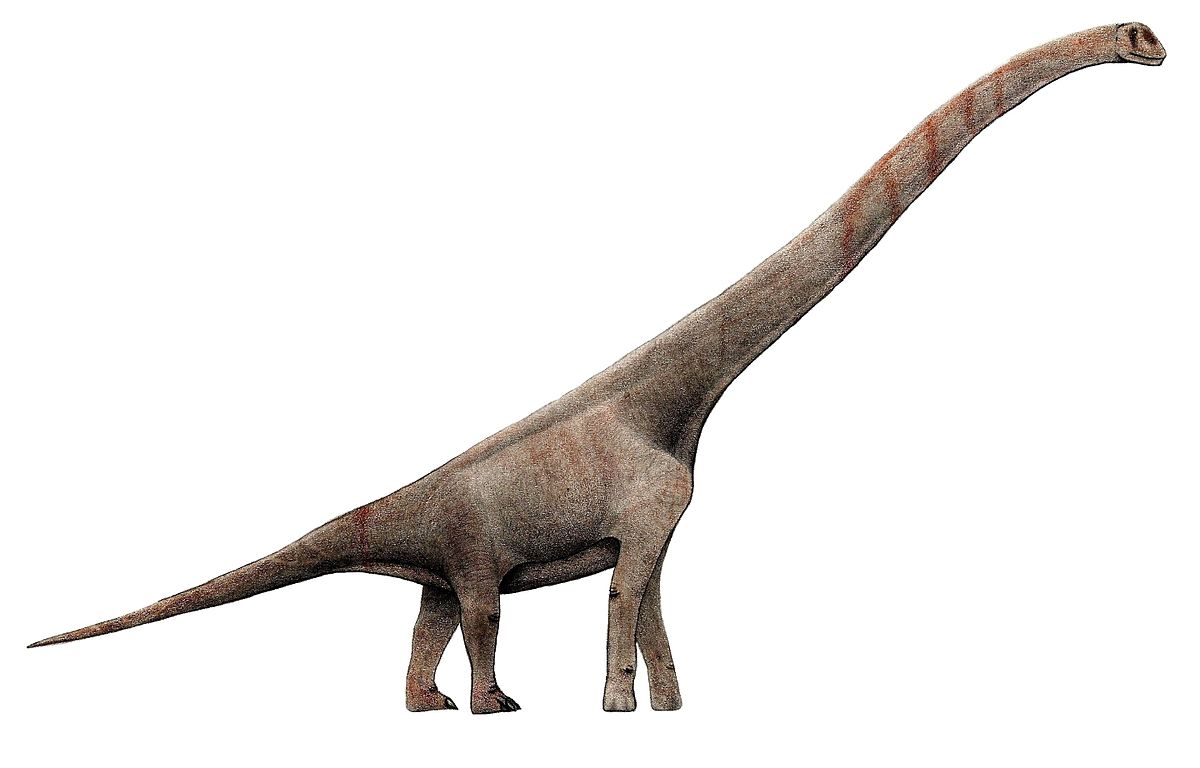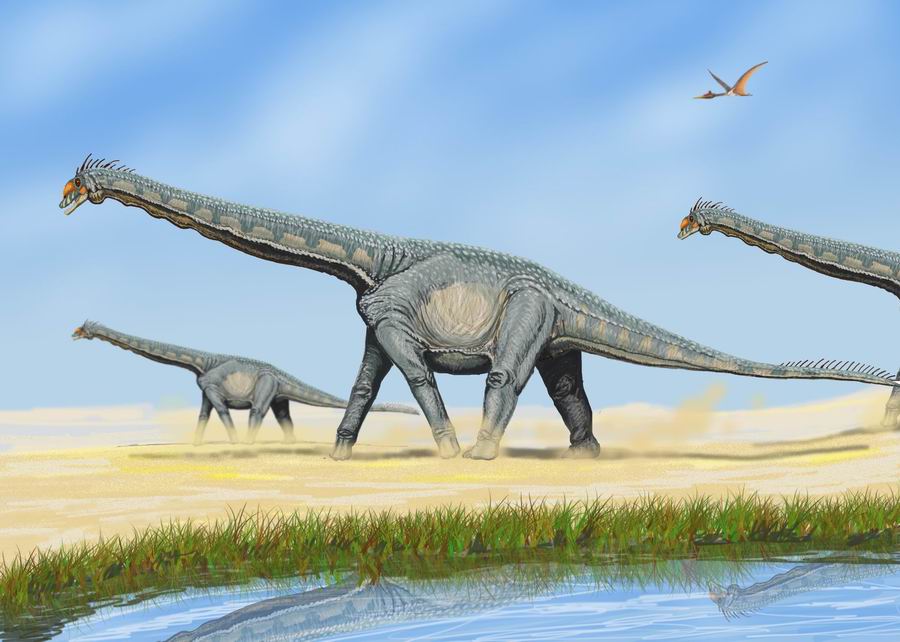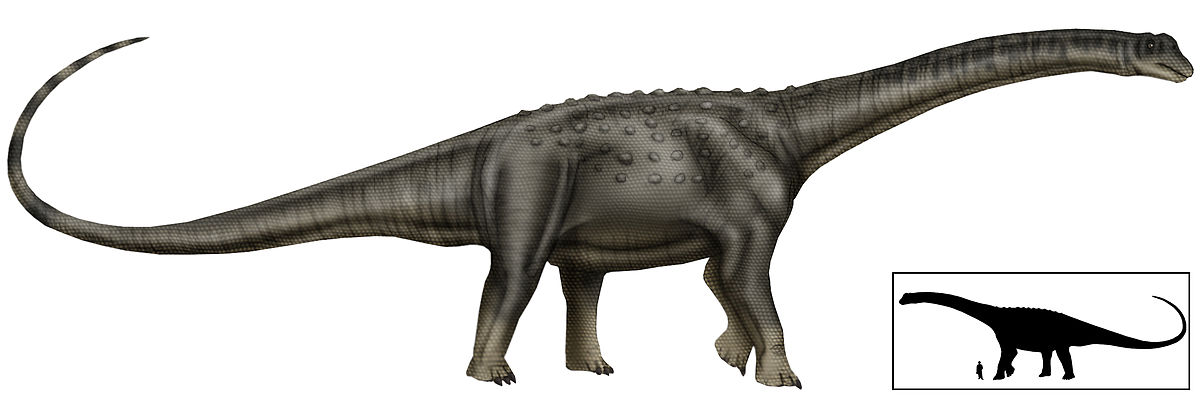Most of the biggest animals of all time died out millions of years ago, but there’s one still alive today. Dinosaurs dominate any list of the world’s biggest animals; some longer than 100 feet, and heavier than 10 buses. For a while the animals that dominated the world weren’t the ones who were the smartest, or the fastest, but the ones which could grow the biggest. This is a list of the 10 biggest animals of all time.
Spine Lizard
The Spinosaurus is the largest meat eating animal in history. The Spinosarus is a semiaquatic species, and would often spend time swimming underwater. It’s possible it spent more time submerged than on land. One of it’s rival predators would have been the Giant Crocodile called Sarocosuchus. A giant 40 ft crocodile that lived in the same area. It also lived about 100 million years ago, and roamed the swampland of Africa. The dinosaur was discovered in 1912, but was destroyed later during World War II. The Spinosaurus could reach lengths over 50 ft long, making it one of the biggest animals of all time.
Megalodon
Megaladon means “big tooth” or “big mighty”. Megalodon is giant species of shark that lived about 23 million to 2.6 million years ago. It’s one of the biggest animals in vertebrate history, and one of the most powerful. It could grow up to 59ft, making it largest shark in history. Evidence for the Megalodon has been around since the Rennaisance however at the time it was believed to be evidence of dragons. They believed the tooth they found embedded in a rock was actually the tongue of a dragon or snake. It was so large that it likely had to eat 1 ton of food eat day to stay alive. It likely preyed on sea lions, sea cows, and whales.
Leedsichthys
Leedsichthys is the largest fish to ever exist, and one of the biggest animals to ever roam the sea. It’s estimated that this fish was about 52 ft long, but it’s hard to know exactly how big it is, and some estimated have put it as high as 98 ft. It was discovered in 1889 by Alfred Nicholson Leeds, which is where the fish gets it’s name. Large parts of the fish are made up of cartilage, not bone, which is why it’s so hard to estimate it’s size. The Leedsichthys is armed with over 40,000 teeth. which it used to eat small animals from the ocean. It lived during the late Jurassic period which was about 165-155 million years ago.
Titanoboa
The Titanoboa is a 50 ft long snake, making it the largest snake in history, and one of the biggest animals of all time. It used to occupy the jungles of northern Colombia around 60 million years ago. The Titanoboa mainly ate fish for it’s diet, and would have been at the top of the food chain in it’s region. This giant snake lived about 5 million years after the dinosaurs went extinct. Interestingly a life sized Titanoboa was once displayed in Grand Central Station, in order to help market an upcoming documentary on it. Titanoboa mean Titanic Boa.
Dreadnoughtus
Dreadnoughtus was found in the Cerro Fortaleza Formation in Santa Cruz Province, Argentina. It’s one of the biggest animals in the history of the world, it’s neck alone is 37 ft long, and it’s entire body is 85 ft. It’s so huge that it weighed as much as seven t-rexes. It was an apex predator and there wasn’t really any nearby animal that could been a threat to the species. The dinosaur died when the ground it stood on became quicksand, after a recent flood. This is the reason why the bones found were in such good condition. It’s strongest weapon would have been it’s tail, which was 29 ft long.
Sauroposeidon
Sauroposeidon was about 112 ft long, and 59 ft high. It’s name means “earthquake god lizard”. It’s bones have been found in Oklahoma, Wyoming, and Texas. It was the last Sauropod in North America, meaning it was probably the biggest creature in the continent at the time. It walked the earth around 110 million years ago. The reason it was caused Sauroposeidon is because Poseidon was known to cause earthquakes, and the dinosaur was so huge the ground would shake as it walked.
Alamosaurus
The Alamosaurus is the largest dinosaur from North America. It’s name means “Ojo Alamo Lizard”. It dates back to the Cretaceous Period. Most of it’s length comes from it’s long neck and tail. It survived on a plant diet, and was partially covered in armour. It could grow up to lengths of 98 ft. The dinosaur is about 66 million years old. The Alamosaurus is one of the biggest animals to walk the earth, and forces scientists to rethink how large land animals can truly become.
Puertasaurus
The Puertasaurus is one of one most mysterious dinosaurs; little is known about bit, as only few of it’s bones have been found. Generally the bigger an animal the less likely it is there’ll be a lot of bones. The reason for this is a mix of scavengers scattering the body parts, and natural causes like storms and floods damaging the remains. The estimated length of this creature is 98-130 ft long. It lived during the late Cretaceous Period in Patagonia. It’s name means “Puerta Lizard”, it was named after the man who discovered it Pablo Puerta.
The Blue Whale
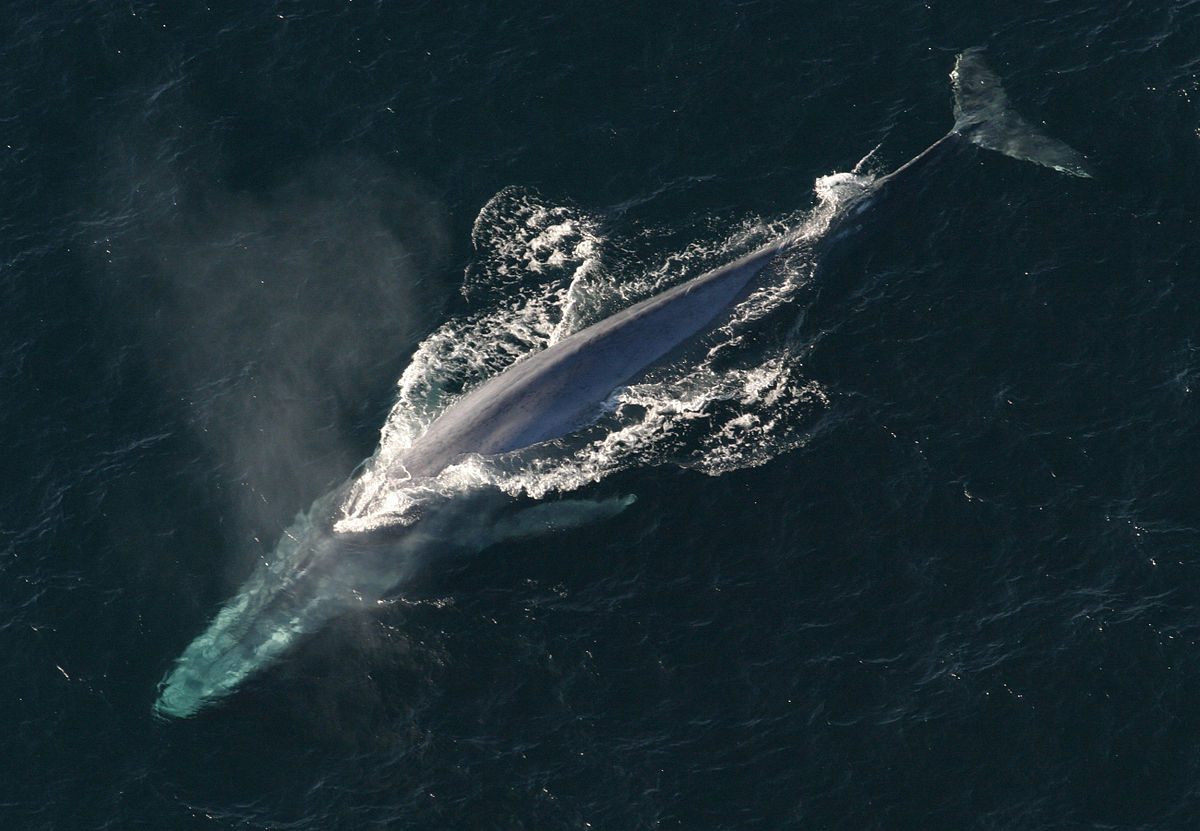
The Blue Whale is the largest animal to have ever existed on this planet. The average one weighs around 110 tons, but they can weight up to 180 tons. Their hearts are the size of cars, and it’s beat can be heard from two miles away. They can grow to be 100 feet in length, but whales have been getting smaller over time. This is because whale hunters chase after the big ones to get a bigger prize. The typical Blue Whale today is about 80 feet long. Large populations of Blue Whales used to roam all the world’s ocean’s until the Twentieth century. Now they’ve been hunted almost to extinction and are considered an endangered species.
Argentine Lizard
The Argentinosaurus, which means Argentine lizard, is the largest dinosaur to ever walk the earth. It lived almost 100 million years ago, during the Late Cretaceous Period. It was discovered in 1983, when one of it’s bones was mistaken for a giant piece of petrified wood. The giant beast was 130 feet long, and 24 feet high. Even though it was so large, it could run at speeds of 5 mph. The creature was a herbivore, and relied on a massive plant diet to sustain it’s giant size. It’s the heaviest, and the largest land animal in history. Surprisingly it’s babies were born from an egg only the size of a rugby ball. It took them around 40 years to reach the size of an adult.

